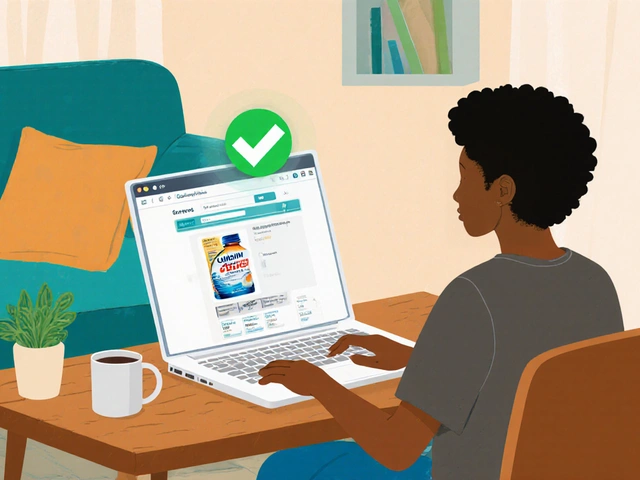Medication Side Effect Risk Calculator
Medication Side Effect Risk Calculator
This tool helps you understand how your body type, age, and biological factors might affect how medications are processed. Based on research showing significant differences in drug metabolism between men and women.
Input Your Information
Women are nearly twice as likely as men to have a bad reaction to the same dose of medication. It’s not because they’re more sensitive or overly cautious-it’s because most drugs were tested mostly on men, and the dosing hasn’t changed since.
They Got the Dose Wrong
In the 1970s, the FDA told pharmaceutical companies to keep women out of early drug trials. The goal was to protect unborn babies, but the rule stuck. Even after the 1993 NIH law said women should be included, the real change never came. Drug companies kept using male bodies as the default. Today, women make up almost half of all participants in clinical trials-but only 12% of pharmacokinetic studies even look at how men and women process drugs differently. The result? Millions of women are taking pills designed for men. Take zolpidem, the sleep aid sold as Ambien. In 2013, the FDA finally acted after years of data showing women metabolized it 50% slower than men. The same dose left women groggy the next morning, increasing their risk of car crashes. The solution? Cut the dose for women in half. But that was 11 years after researchers first flagged the problem-and it’s still one of the only drugs with sex-specific dosing on the label.Why Your Body Processes Drugs Differently
It’s not just about hormones. Women’s bodies are built differently, and that changes how drugs move through them. Women have about 40% less of the liver enzyme CYP3A4, which breaks down half of all prescription drugs-from statins to antidepressants. That means drugs stick around longer. A standard dose of diazepam (Valium) stays in a woman’s system 20-30% longer because women have more body fat. Fat-soluble drugs get stored there and release slowly, leading to prolonged effects and higher risk of side effects. Kidneys matter too. Women clear lithium, a mood stabilizer, about 22% slower than men. That’s why women on lithium are more likely to develop toxicity-even when their blood levels are labeled "normal" based on male averages. And then there’s the menstrual cycle. Levels of estrogen and progesterone shift throughout the month, changing how fast drugs are absorbed and broken down. One study found metabolism of certain antidepressants can swing up to 30% depending on the phase of the cycle. Yet most doctors don’t ask when your period started. They just prescribe the same dose every month.What Side Effects Are Women More Likely to Get?
It’s not random. Certain side effects show up far more often in women. - Antidepressants: Women report 1.5 to 2 times more nausea and dizziness with SSRIs like sertraline and fluoxetine. On Drugs.com, 68% of female users noted severe nausea compared to 41% of men. - Antipsychotics: Women are 2.3 times more likely to develop QT prolongation-a heart rhythm issue-when taking haloperidol. This can lead to dangerous arrhythmias. - Antibiotics: Women have a 47% higher risk of severe skin reactions to sulfamethoxazole (Bactrim), one of the most common antibiotics. - Painkillers: A 2022 survey of chronic pain patients found women were 2.1 times more likely to stop opioids due to side effects like dizziness, confusion, and nausea. Men aren’t immune-they have their own patterns. They report 35% more sexual dysfunction from antidepressants and 28% more urinary retention from anticholinergics like oxybutynin. But these are less common overall. The bigger issue? Women are getting hit harder by drugs meant to treat the same conditions in both sexes.
The Dose Gap Is Everywhere
This isn’t about a few odd drugs. It’s systemic. A 2020 study from UC Berkeley and the University of Chicago found 86 FDA-approved medications show clear sex-based differences in how they’re processed. That includes:- Antidepressants: sertraline, fluoxetine
- Heart drugs: atenolol, verapamil
- Seizure meds: gabapentin, carbamazepine
- Pain relievers: ibuprofen, acetaminophen
Why Don’t Doctors Know This?
Even when the science exists, it doesn’t reach the clinic. A 2022 AMA survey found only 28% of physicians routinely consider sex differences when prescribing common drugs. Two out of three didn’t even know about the FDA’s 2013 zolpidem dose change for women. Medical schools barely teach pharmacology through a sex-based lens. Most textbooks still use male-only data in examples. Nurses and pharmacists often don’t know either. On Reddit, a nurse with 12 years in the ER said she sees twice as many women come in with bad reactions to standard pain meds. She’s not alone. And when women report side effects, they’re sometimes told it’s "all in their head"-or dismissed as anxiety. But the data doesn’t lie: women report symptoms more often because they’re more likely to seek care. That doesn’t make the reactions less real. It makes them more visible.Is It Biology-or Just Reporting?
There’s a heated debate in science. One side says biology explains everything. The other says women are just more likely to report side effects-and they take more drugs. Harvard’s Dr. Sarah Richardson analyzed 33 million FDA adverse event reports. When she adjusted for the fact that women take 56% more prescriptions than men, the difference in adverse event rates dropped to under 5%. That suggests a big part of the gap comes from exposure, not biology. But Dr. Janine Austin Clayton from the NIH says both things are true: biology matters, and reporting behavior matters too. Women are more likely to notice subtle changes-like morning grogginess, mild nausea, or fatigue-and speak up. Men often ignore or downplay symptoms until they’re severe. The truth? It’s not either/or. It’s both. Women’s bodies process drugs differently. And they’re more likely to notice and report it. That’s why the gap exists-and why ignoring either side gives you half the picture.
What’s Changing? Slowly.
Change is happening-but it’s crawling. The FDA launched its "Sex and Gender Roadmap" in 2023, aiming to fix this by 2026. The European Medicines Agency now requires sex-stratified data in all Phase III trials. The NIH just funded a $12.5 million center at Harvard Medical School to study sex differences in medicine. In Australia, researchers at the University of Sydney are starting a pilot program to test sex-specific dosing for common antidepressants. The JUST Dose study at UC Berkeley is using AI to build personalized dosing models based on sex, weight, and age. Early results show a 40% drop in side effects when the algorithm is used. Companies like Adyn and Womb Society are now building drugs specifically for women’s biology. But they’re tiny players in a $970 billion industry. Less than 0.5% of pharmaceutical R&D is focused on sex-specific formulations.What You Can Do
If you’re a woman taking medication:- Ask your doctor: "Was this dose tested on women?"
- Track side effects in a journal-note timing, severity, and whether they line up with your cycle.
- Don’t assume "standard dose" is right for you. If you’re small, elderly, or have a slower metabolism, you might need less.
- Check Drugs.com or PatientView for user reports. Female users often share details doctors miss.
- Start asking about sex and body weight when prescribing.
- Use the FDA’s Drug Trials Snapshots to see sex-disaggregated data for newer drugs.
- Consider lowering doses for women on drugs like zolpidem, digoxin, or SSRIs-even if the label doesn’t say to.
The Bottom Line
Women aren’t broken. The system is. For decades, medicine treated men as the standard human. That’s not just outdated-it’s dangerous. Women experience more side effects not because they’re fragile, but because they’ve been invisible in the research. The fix isn’t complicated: test drugs on both sexes. Analyze the data separately. Adjust doses accordingly. Label it clearly. It’s not about creating two different medicines for every drug. It’s about making sure the one medicine you’re giving actually works-and doesn’t hurt-the person taking it. The data is there. The science is clear. What’s missing is the will to change.Why do women have more side effects from medications than men?
Women experience more side effects because most drugs were tested primarily on men, and dosing hasn’t been adjusted for biological differences. Women have less liver enzyme activity, higher body fat, slower kidney clearance, and hormonal fluctuations that change how drugs are processed. These factors mean the same dose can lead to higher drug levels and longer exposure in women, increasing the risk of adverse reactions.
Is the higher rate of side effects in women just because they take more medications?
Partly. Women take about 56% more prescriptions than men on average, which increases exposure. But even after adjusting for usage rates, studies still show higher rates of certain side effects like dizziness, nausea, and QT prolongation in women. This points to real biological differences-not just more drug exposure.
Are there any drugs with sex-specific dosing already?
Yes. Zolpidem (Ambien) is the most well-known-FDA lowered the dose for women by 50% in 2013 after research showed they metabolize it slower. Other examples include eszopiclone (Lunesta) and zaleplon (Sonata), which also have lower recommended doses for women. But only 4% of all FDA-approved drugs have sex-specific dosing on the label.
Should women always take lower doses of medication?
Not always. Dose adjustments depend on the drug, body weight, liver and kidney function, and age-not just sex. But sex should be one factor doctors consider. For example, a small woman on zolpidem or digoxin may need less. A larger woman on the same drug might not. The key is personalized dosing, not blanket rules.
Why don’t doctors know about these differences?
Medical training rarely covers sex-based pharmacology in depth. Most drug labels don’t mention sex differences, and many doctors aren’t aware of studies showing them. A 2022 survey found 67% of physicians didn’t know about the FDA’s zolpidem dose recommendation for women. Without clear guidance or labeling, it’s easy to miss.





Maria Romina Aguilar
November 28, 2025 AT 15:31Brandon Trevino
November 30, 2025 AT 14:38Denise Wiley
November 30, 2025 AT 21:03Hannah Magera
December 2, 2025 AT 09:50Alexander Rolsen
December 2, 2025 AT 18:55Michelle N Allen
December 3, 2025 AT 16:31Madison Malone
December 4, 2025 AT 02:36Graham Moyer-Stratton
December 5, 2025 AT 02:57tom charlton
December 5, 2025 AT 06:15Jacob Hepworth-wain
December 5, 2025 AT 07:56Craig Hartel
December 5, 2025 AT 10:25Chris Kahanic
December 6, 2025 AT 03:08Geethu E
December 6, 2025 AT 03:40anant ram
December 7, 2025 AT 04:51Denise Wiley
December 8, 2025 AT 02:47